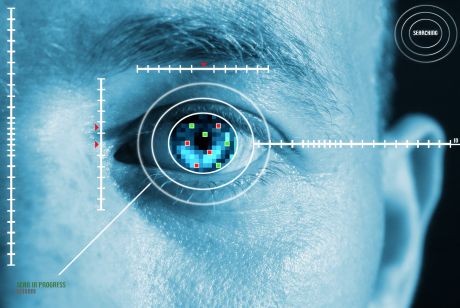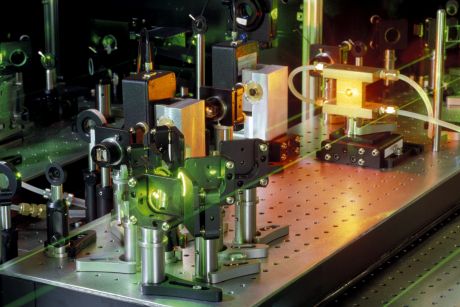Scientists have been searching for over two decades to explain how the Arctic is contaminated with toxic mercury pollution. A new study sheds light on the likely process, while warning of its hazards to humans and the environment.
Apps allowing citizens to report crimes or incidents are now commonplace, but they generally fail to adapt local contexts, cultures and sensibilities. SecureU, a new app that addresses this shortcoming, is currently being tested in five European cities.
Walkie-talkies were invented 70 years ago. One could be forgiven for ever thinking that the advent, rise and now omnipresence of mobile phones would sound their death knell. But the truth is, in 2018, walkie-talkies are still being used. Now, a Finnish company proposes to enhance them with the mobile broadband technology we find on our smartphones.
With uncertainty around the risks of nanomaterials hampering the EU’s innovative potential, researchers are working on a safety concept to better monitor this emerging technology.
According to a study recently published in the ‘The Lancet Planetary Health’, global warming could impact about two-thirds of the European population a year, 351 million people, by 2100, resulting in 152 000 deaths annually.
Fingerprint scanners, iris and facial recognition systems – the world of biometric identification is burgeoning to keep up with the ever-increasing demand for quick, easy-to-use security measures.
A new study led by the University of Plymouth and funded through the EU-funded TRACY project has advised governments to do more to develop transport policies that allow those over the age of 65 to remain mobile and active.
Police in the UK and Belgium have started testing a semi-autonomous criminal intelligence analysis system designed to speed up investigation, improve precision and even pre-empt crimes by detecting connections that people often miss.
One of the IT debates of the day surrounds the relative merits of data privacy vs. the need for law enforcement agencies to track criminal, online activity. One EU-funded project has set out to find a middle ground, by giving much needed tools to citizens and law enforcers alike.
Building on previous EU-funded research into uranium, researchers have established a potential approach for safely removing radioactive elements from nuclear waste.
A European project is coming close to the validation of a prototype of ‘Passive bistatic radar’ (PBR) technology based on Galileo transmissions. Once finalised, the new system could help relevant authorities to assure better maritime surveillance, detecting and localising, even of non-indexed ships.
US-based researchers have identified how the compound lysergic acid diethylamide (LSD) attaches to serotonin receptors in the brain and why it is so potent.
A new study released by the EU-funded FUTURE SKY SAFETY project has reported that half of airline pilots believe that fatigue is not taken seriously by airlines, raising questions about safety within the European aviation industry.
New research published by the EU-funded HURRICANE project has highlighted how the north eastern coast of the USA could be struck by more frequent and more powerful hurricanes in the future due to shifting weather patterns.
EU-funded researchers have created a tool to assess the impact of natural disasters on transport infrastructure in order to save both lives and money.
In the aftermath of the earthquake that struck the Italian town of Amatrice and its surrounding region on 24 August 2016, Italian authorities requested the help of the EU-funded TRADR project. The project stepped up to the plate and quickly deployed two Unmanned Ground Vehicles (UGVs) and three Unmanned Aerial Vehicles (UAVs) to the devastated region.
The EU-funded XP-DITE project is trialling the world’s first security system that could halve security time at airports by combining EU and US checkpoints into a single checkpoint.
To address the evolving cybersecurity threat, the EU-funded SHARCS and PQCRYPTO projects are developing the security paradigms, architectures and software needed to ensure our ICT systems are secure and trustworthy.
Researchers from the EU-funded VUELCO project have found that the build-up of magma 6 kilometres below El Salvador’s Ilopango caldera means that the country’s capital, San Salvador, may be at risk from future volcanic eruptions.
Tragic events such as the recent Brussels Airport bombing have enlightened the need for stronger security measures and improved technologies. This is one of the applications the MIRPHAB project team had in mind, as they unveiled a chemical sensor capable of detecting the likes of drugs and explosives from a distance of 30m.

EU researchers have developed tools and guidelines to help protect Europe’s spice and herb commodity chains from deliberate, accidental and natural biological and chemical contamination.

Faster, better and more powerful facial recognition software has been developed, promising to enhance security surveillance in sensitive public settings with numerous people.

Social media networks can access personal information about their online users, often without their knowledge. New online tools and guidelines can help users protect themselves.

Scientists have successfully produced portable coherent light sources emitting at the mid-infrared (mid-IR) that can find use in imaging and sensing applications.

An EU team developed separate parachute soft-landing systems for two kinds of small aircraft. The different versions, plus associated subsystems, were successfully shown to be either deployable by the pilot or by remote activation.



